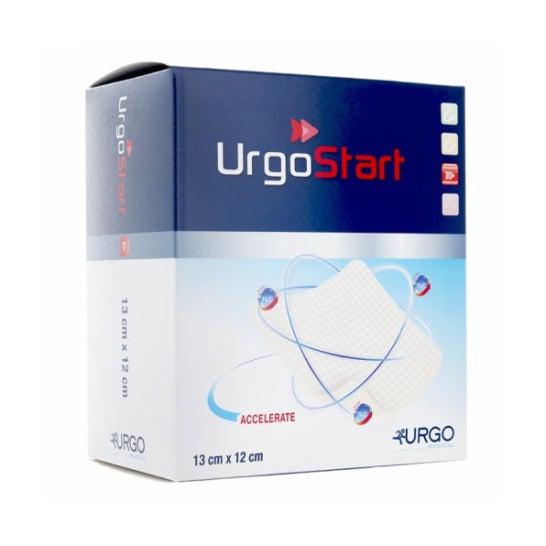Dressing that works to protect the maceration of wounds and helps to form an ideal environment for healing and scarring. It helps to restore the chemical balance of wounds by keeping them at an ideal temperature of 37 degrees Celsius.
Urgo Urgostart Pans N/Adh 13X12Cm 16
Log into your account and set up an alert to be notified when the product becomes available again.
Do you want us to notify you when it is available?
Dressing that promotes wound healing
Description
Instructions for use
Clean the wound according to the usual protocol. Next, dry the surrounding skin thoroughly. Remove the protective films from the adhesive and apply the interface side of the dressing directly to the wound. Once in place, apply a compression dressing over the dressing.
Composition
External part: non-woven, flexible, protective, semi-permeable, 100% polyurethane support. Internal part or in contact with the wound: it has a TLC-NOSF interface composed of lipid-colloid particles and NOSF.
Pharmaceutical Advice
Plasters, adhesive bandages or dressings are patches that have a sterile gauze pad in the centre, surrounded by an area that sticks to the skin. They are used to protect open wounds, prevent infection and facilitate the healing process.
There are different types of plasters depending on the type of injury. To choose the right dressing, you need to consider the conditions the wound will be subjected to. They come in multiple sizes, materials, colours, flexibility, and can even be water-resistant. They may also have an additional ingredient with antiseptic properties to ensure a better healing process.
It is essential to clean the wound with water and soap, disinfect it and carefully dry the area with a sterile gauze before applying a dressing to any type of wound. Afterwards, simply remove the protective elements and make sure that the gauze pad, not the adhesive part, completely covers the wound.
Remember that the dressing is intended to protect the skin until it forms a protective scab. Unless the wound is in a rubbing area, it is preferable to remove the plaster once the scab has formed so that it can heal completely.
Please note that plasters are only indicated for blistering or minor bleeding. If the wound is very large or deep, you should consult your doctor, who will be able to assess how you should to proceed.
RELATED SEARCHES ABOUT Bandages
New in Flesh wounds
- Take Care Super Cute Friends Apósitos 24uds
- Dyns Alcohol Sanitario 96º 1000ml
- Take Care Pansements Barbapapa 24uts
- Take Care Pansements Bob l'Éponge 24uts
- Take Care Pansement Smiley 24uts
- Stentil Apósito Sensible 3 Tamaños 8uds
- Stentil Apósito Universal Waterproof 40uds
- Elastoplast Waterproof XL Cicatrización Rápida Apósito 8uds
- Octenilin Gel para Heridas 20ml
- Hartmann Nature Care Esparadrapo 100% algodón 5m X 2,5mm


